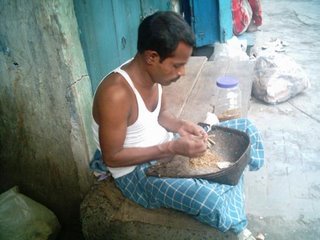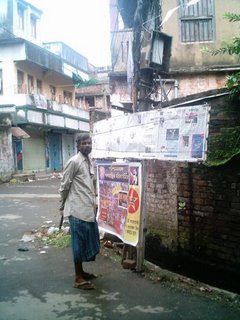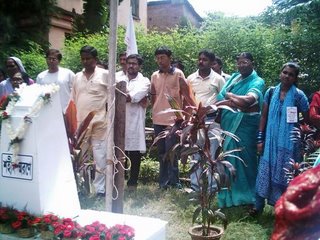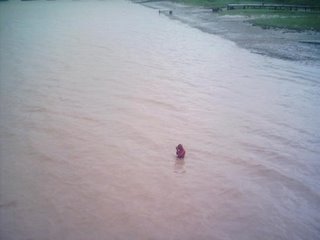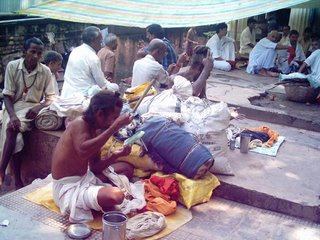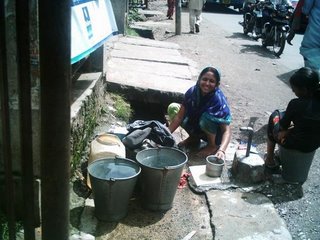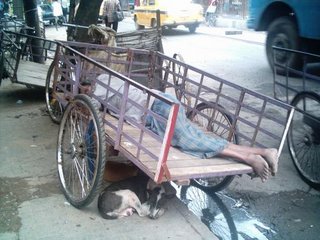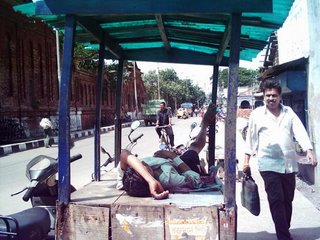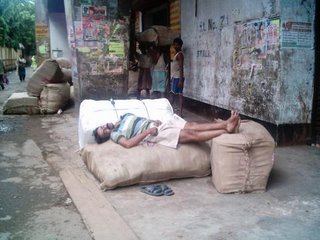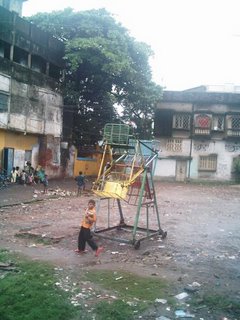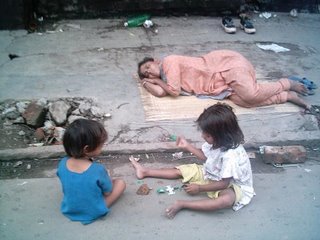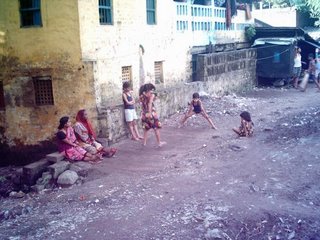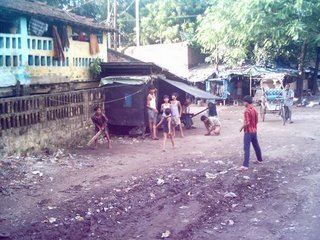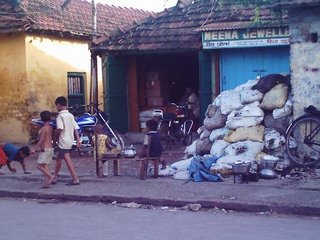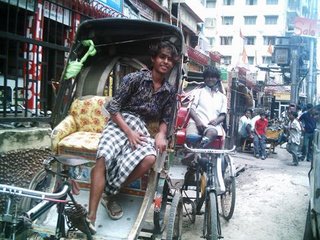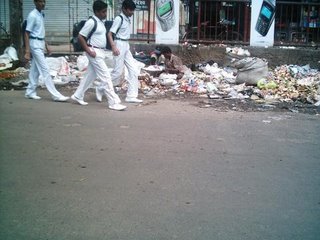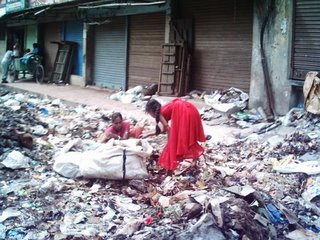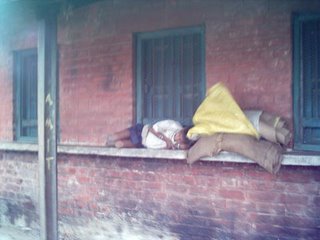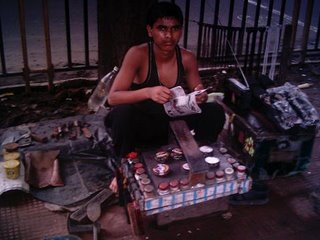
The area around Zakaria Street, the Nakhoda Mosque (Chitpur Road), Colootola Street, Bolai Dutta Street, Phears Lane (Calcutta 73) - is THE place to visit in Calcutta during
Ramzaan, for gastronomic delight.
This locality used to be the hub of the Urdu-speaking Muslim elite of Calcutta. There are other important centres of the Muslim community in Calcutta, but they are predominantly of a working-class character. So the food available there would tend to cater to the low-income consumer, rather than a gastronome.
Ramzaan is a time when food becomes very significant, and various items (quite rich) are available only during this time. The whole locality becomes a public exhibition of food.
Note: strong digestive system needed!
The cuisine is derived from north India, but has acquired its own distinctive style and flavour; referred to as "Calcutta Mughlai". One of the important influencers (but not the only one) was Awadh's Nawab Wajid Ali Shah's exile in Metiabruz, Calcutta.
The visit can begin from Zakaria Street (opposite Mohd. Ali Park on Chittaranjan Avenue), which leads to Chitpur Road, near the Nakhoda Mosque. Colootola Street is parallel to (north of) Zakaria Street. Bolai Dutta Street is off Chitpur Road (going west).
Bolai Dutta Street is also a centre of fruit wholesaling.
Ramzaan is a very important time for the city's fruit trade.
On Zakaria Street:
murg changazi and
mahi akbari (fish), and special fish fry. These are road side items around the mosque.
Besides we have renowned restaurants like Sufia and Aminia which sells special
halims -
Arbi Halim,
Maghaz / Kofta zaban halim / Gosht halim. All quite heavy (filling), so its best to buy and take home.
Delectable special breads and buns are available on the roadside.
Aminia and the nearby Royal both offer special
Ramzaan menus.
In Bolai Dutta Street there is the famous Adam's
kebab shop, its specialities being
sutli kebab or
boti kebab, and
niri kebab.
In Colootola, roasted chicken items are available on the roadside.
Biryanis are available all around.
Nearby is the famous Haji Allauddin sweets shop - important sweets items being
khajla /
laccha /
dudiya /
Mansoor pak /
Malai barfi / special
laddu.
Visit, check out what's available, try a few things, take things home. And come again with family and friends.
People interested in
kurtas and
lungis /
dhotis would find a lot on offer, at attractive prices, on Zakaria Street. There are also shops selling
itr (fragrance) and
surma. So many shops, selling so many interesting things! I once bought an old-style iron (
istri), the kind where burning coal is put inside. I gave this as a gift to a friend, who uses it as a paper-weight cum odds-and-ends repository on his desk! I was also pleasantly surprised to find a Tamil shop selling
lungis /
dhotis. I had bought a white dhoti there, which I still use.
There are also several bookshops in this area selling Urdu books, so if anyone wants to get Iqbal, Faiz, Manto, dictionaries, primers etc, this is the place to go to.
After this one can walk southwards towards Poddar Court and going down along Bentick Street reach the Tipu Sultan mosque in front of the
Statesman office. Behind the mosque is an old and famous
faluda shop which offers
nargisi faluda.
The best time for the gastronomic stroll would be 7 to 8.30 pm. Note: the best
halim runs out by 7 pm.
While the "Right to Information" is important in a democracy, equally important in a pluralist society is the "Desire to Know & Share"!



